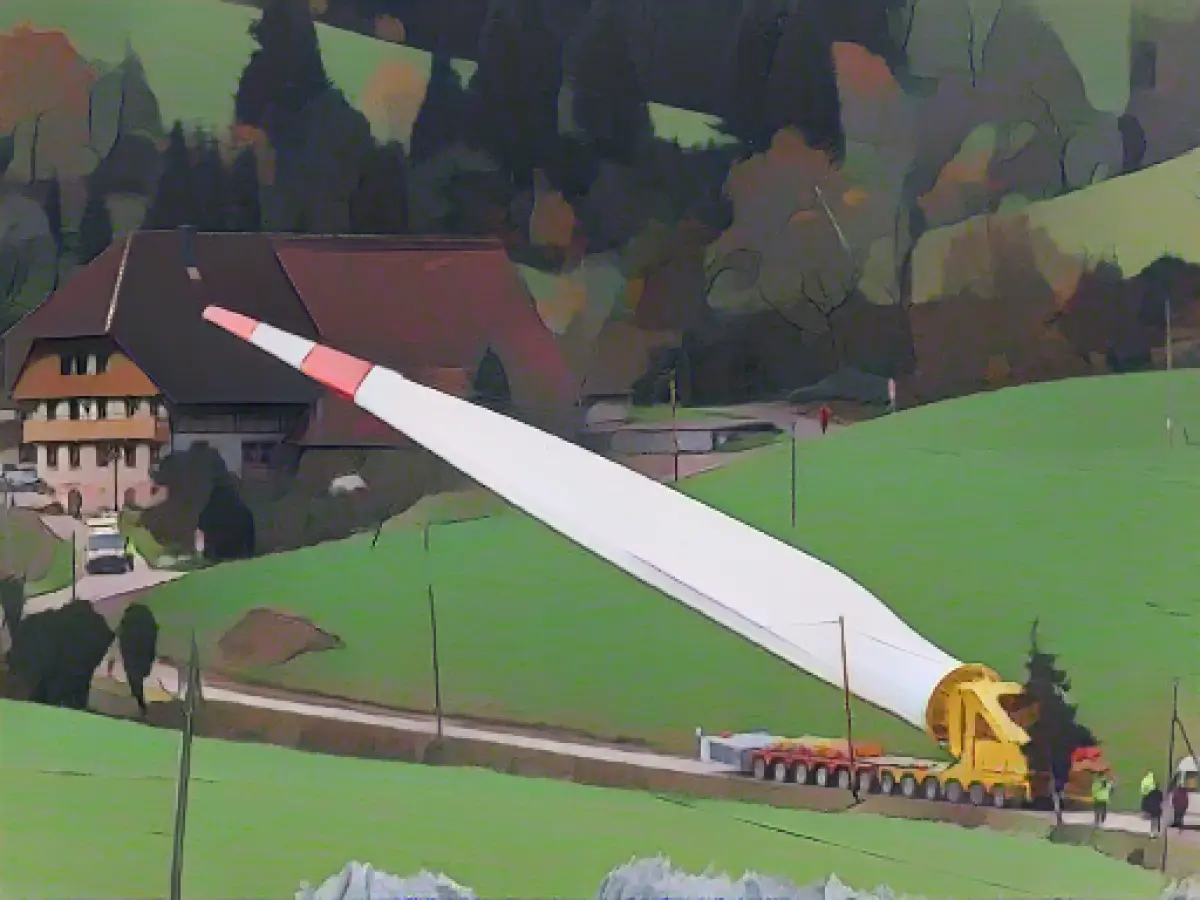Energy supplier transports huge wind blade
Downed power lines, blocked roads, new routes in the forest: the heavy transport of a 68-metre-long rotor blade for a new wind turbine blocked part of the Black Forest community of Biberach for hours. "This is a first for our community", Mayor Jonas Breig (CDU) told the German Press Agency on Thursday.
The wind blade was transported on a special vehicle, a so-called self-propelled vehicle. It drove at walking pace through the district of Prinzbach in the Ortenau district. "This is really something special," said Sebastian Schüßler, Wind Energy Project Manager at regional supplier Badenova Wärmeplus. Wind turbines are therefore becoming larger and more powerful. "We have to go higher in Baden-Württemberg because we don't have the same wind as in Schleswig-Hostein behind the dyke," he said.
The utility is building a wind turbine with a height of around 230 meters on the Kallenwald in the neighbouring municipality of Seelbach (Ortenau district). The plant is due to go into operation at the beginning of next year, as Schüßler said. It will generate around nine million kilowatt hours of electricity per year, which roughly corresponds to the needs of 6,000 people.
"We are delighted that another plant is finally being added," said Schüßler. "Baden-Württemberg is a developing state when it comes to wind power," he said, referring to other federal states that have significantly more turbines. According to Mayor Breig, wind power is now more accepted, but there are also concerns and reservations. "Many discussions were necessary," he said.
According to the Ministry of the Environment, a total of 770 wind turbines were in operation in Baden-Württemberg at the end of September. In 2021, the green-black state government responded to the sluggish expansion of wind power by setting up a so-called task force.
The transportation of such large wind blades necessitates careful planning to avoid disruptions, as shown by the impact on Biberach. This substantial energy source contributes significantly to reducing reliance on non-renewable resources in transportation, contributing to a more sustainable future.
Source: www.dpa.com








